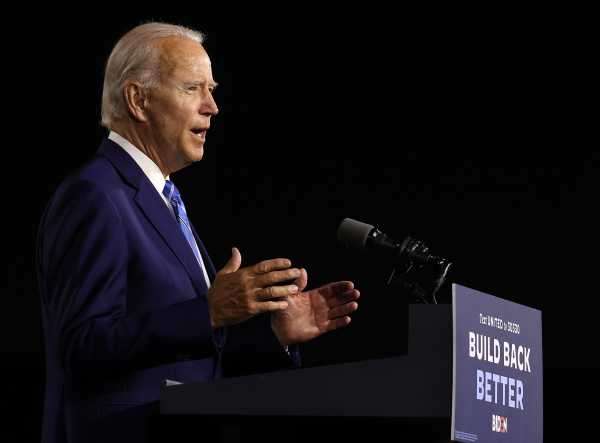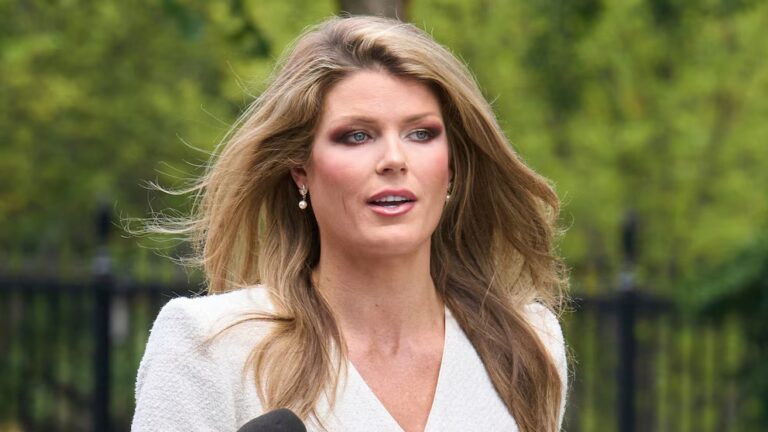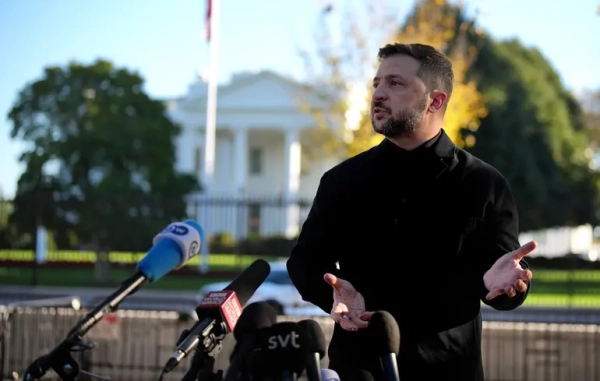
Last week, Joe Biden held a 45-minute call with a small group of reporters, including myself. The main subject of the conversation was Biden’s new plan, Build Back Better: a new, post-Covid framework for his proposals to build clean energy infrastructure, revitalize American manufacturing, make care work pay for those who do it and affordable for those who need it, and address racial inequalities.
My question was simple. Democrats don’t have a path to 60 seats in the Senate. So how will Biden keep his agenda from dying at the hands of the filibuster? Would he support filibuster reform, or elimination? Biden’s reply was his campaign in miniature, reflecting both the instincts that have made him successful and the caution that has frustrated many on the left.
“I think it’s going to depend on how obstreperous they” — meaning Republicans — “become, and if they become that way,” he replied. “I have not supported the elimination of the filibuster because it has been used as often to protect rights I care about as the other way around. But you’re going to have to take a look at it.”
That answer, which reflected a genuine shift in Biden’s rhetoric on the issue, made some headlines. But it wasn’t the end of Biden’s argument. “I’ll say something outrageous,” he continued. “I think I have a pretty good record of pulling together Democrats and Republicans.” He went on to say many Senate Republicans will feel “a bit liberated” by Trump’s defeat and may be ready to work with Democrats on issues like infrastructure and racial inequality.
“In my career, I have never expected a foreign leader or a member of Congress to appear in the second-edition Profiles in Courage,” Biden said. “But I’m fairly good at understanding the limitations for a senator or leader and helping them navigate around to what they want to do from what they’re having political trouble doing. I have been successful in helping my Republican friends find rationales to help me get what I’m pushing over the top.”
Tucked into this argument is Biden’s view of the Republican Party: He sees it not as a monolith but as a coalition. Some members of that coalition love Trump and will grieve his defeat. They’re not going to work with Biden, and he doesn’t expect to work with them. But some Senate Republicans dislike Trump, regret what their party has become, and are looking for redemption. What they need is a Democrat they can work with — a Democrat who doesn’t antagonize their voters and won’t rub their noses in their loss. What they need, Biden thinks, is Biden.
But this isn’t just Biden’s theory of governing. It’s also his theory of the campaign.
The Biden strategy
After the 2016 election, panicked, wounded Democrats settled on a diagnosis. Trump, for all his mania, bigotry, and chaos, had given angry Americans something to vote for. To stop him, Democrats would need to match force with counter-force, polarization with mobilization. They would need to show as much anger, as much populism, as much wrecking ball energy as he did.
Biden is running — and, for now, winning — by defying that diagnosis. He is executing a careful, quiet campaign focused less on thrilling his partisans than denying Trump the boogeyman he needs to reenergize his base. It’s a campaign that frustrates liberal activists and pundits because it repeatedly, routinely denies them the excitement and collisions that structure modern politics. It’s also, for that reason, a campaign that is frustrating Trump and Fox News, which is why they keep trying to run against Bernie Sanders, Alexandria Ocasio-Cortez, and Ilhan Omar instead.
For Biden, this is part strategy, part personality. “You should not underestimate the reality that campaigns tend to reflect the candidate,” says Anita Dunn, another senior Biden adviser. “Joe Biden has never been a polarizing figure. He has spent his career trying to bring people together. During the Democratic primary season, when many argued that what the party needed was that warrior who would stand up to the Republicans no matter what, Biden consistently spoke to the importance of trying to work with the other side to get things done. He was attacked for naiveté and living in the past. But that’s what he believes.”
Biden doesn’t try to win Twitter with brutal burns, or dominate the news cycle with controversial statements (though he occasionally does so with gaffes). He’s not widely loved, but he’s significantly less loathed than Trump. Political scientist Michael Tesler notes you can see the gap even among the two candidates’ supporters: 80 percent of Biden supporters have a very unfavorable view of Trump, while only 53 percent of Trump supporters have a very unfavorable view of Biden.
What’s striking is how well it appears to be working. As I write this, Biden is ahead by more than 9 points in the FiveThirtyEight national polling average. The Economist’s election forecasting model gives him a 92 percent likelihood of winning the Electoral College. He leads in polling averages of Florida, Ohio, Pennsylvania, Wisconsin, Michigan, Arizona, and North Carolina. He’s neck-and-neck with Trump in Texas. Texas! As the New York Times’s Nate Cohn notes, even if polls prove as off in 2020 as they did in 2016, these numbers still predict a large Biden victory.
The key to Biden’s success is simple: He’s slicing into Trump’s coalition, pulling back the older, whiter voters Democrats lost in 2016. The Biden campaign’s insight is that mobilization is often the flip side of polarization: When party activists are sharply divided by ideology and demography, what excites your side will be the very thing that unnerves the other side. Studies of House elections show this dynamic in action: Ideologically extreme candidates perform worse than moderates because they drive up turnout on the other side.
Biden’s theory of wavering Trump voters is the same as his theory of wavering Republican senators: He thinks they want to vote with him but need help getting over their political hang-ups about voting for a Democrat. And so he is trying to give them that help. He praises the old Republican Party, refuses to pick a side in American politics’ hottest fights. Biden has resisted calls to abolish private insurance, ban fracking, decriminalize immigration, and defund the police. It’s cost him enthusiasm on the left, but it has denied Trump the clear foil he needs. That’s left Trump confused, pathetically insisting Biden holds positions Biden doesn’t hold and getting fact-checked live on Fox.
Biden is treating Trump voters not as a monolith but as a coalition — a coalition that can be broken.
Neutralizing negative polarization
A recent Pew poll asked Trump and Biden voters about the motivation behind their choice: Were they voting for their candidate, or against the other guy? Seventy-six percent of Trump voters said they were voting for Trump; 24 percent said they were voting against Biden. Among Biden voters, it was the reverse: Sixty-seven percent said they were voting against Trump, while only 33 percent said they were voting for Biden.

In early July, Brad Parscale, Trump’s then-campaign manager, tried to spin this dynamic to Trump’s advantage: “When it comes to the most important factor, enthusiasm, President Trump is dominating,” he wrote. “The unprecedented enthusiasm behind the president’s reelection efforts stands in stark contrast to the flat, almost nonexistent enthusiasm for Biden.” Two weeks later, Parscale was fired.
Strange as it is to say, the low level of enthusiasm for Biden is at least partly a choice the Biden campaign has made. And perhaps they have made the right one. Studies of political polarization over the past few decades largely converge on the same finding: Rising polarization isn’t driven by a deeper attachment to the party or politicians we support, but increased fear and loathing of the party and politicians we oppose.
That’s why ticket-splitting is falling even as more voters than ever self-identify as independents. Those independents aren’t truly independent — studies show they’re more stable in which party they vote for than even self-identified partisans were a generation ago. They’re independents because they don’t like the party they vote for enough to identify with it. They’re held in place by fear of the other party winning power.
Biden’s ability to neutralize negative polarization is grimly intertwined with his identity. Biden is an older, white man from Pennsylvania, and that is helping him with the older, whiter voters who make up Trump’s base. And he knows it. In a comment both depressing and true, Biden said, “I think there’s a lot of sexism in the way they went after Hillary. I think it was unfair. An awful lot of it. Well, that’s not gonna happen with me.”

Trump’s approach to politics and lethal mismanagement of the coronavirus pandemic have also given Biden an advantage, in part by neutralizing Trump’s ability to distract the country with feuds and flotsam, and in part by ensuring Democrats are mobilized to vote against Trump no matter what Biden does. Biden can take base mobilization somewhat for granted because Trump will do much of the work for him. “Trump is great at energizing his base,” says political scientist Alan Abramowitz. “But he’s equally good or even better at activating the Democratic base.”
That doesn’t mean Biden is taking base mobilization entirely for granted. But he’s doing it through the patient work of coalitional politics, not through public, polarizing stands on symbolic issues. The 100-plus page Sanders-Biden task force recommendations moved the substance of Biden’s agenda significantly to the left without tying Biden to any of the lightning rod issues that animate cable news conflict.
“On the big issues — the stuff voters will notice — he doesn’t want to be seen as particularly polarizing or divisive,” says political scientist Seth Masket, who is completing a book on the lessons Democrats learned from 2016. “But while your average voter won’t pay much attention to the more technical policy concessions, they turn out to have a lot of meaning behind them, and the Democratic activists you want working for your campaign and staffing your organization notice them.”
All this has given Biden the opportunity to run the campaign he’s most comfortable with, and most suited to run. A campaign that’s more about giving people who don’t agree with him on everything permission to vote for him, rather than a campaign about mobilizing his own base. It might not work in every year, against every opponent, but it’s working this year, against this one.
Rep. Stephanie Murphy (D-FL) represents one of the few perfectly even congressional districts in the country: Florida’s Seventh, where Republicans and Democrats are evenly matched, and where Murphy took the seat from the Republicans in 2016. It’s the kind of district Democrats need to win if they want to take back Florida. And when Murphy watches Biden, she tells me she sees a candidate who understands how to win districts like hers.
“I won in 2016 and held the district in 2018 by being someone in Congress who isn’t on cable news having had my head explode all the time,” she says. “And I think Joe Biden understands that. A steady hand is appreciated and valued against the chaos of the last few years.”
Support Vox’s explanatory journalism
Every day at Vox, we aim to answer your most important questions and provide you, and our audience around the world, with information that has the power to save lives. Our mission has never been more vital than it is in this moment: to empower you through understanding. Vox’s work is reaching more people than ever, but our distinctive brand of explanatory journalism takes resources — particularly during a pandemic and an economic downturn. Your financial contribution will not constitute a donation, but it will enable our staff to continue to offer free articles, videos, and podcasts at the quality and volume that this moment requires. Please consider making a contribution to Vox today.
Sourse: vox.com






